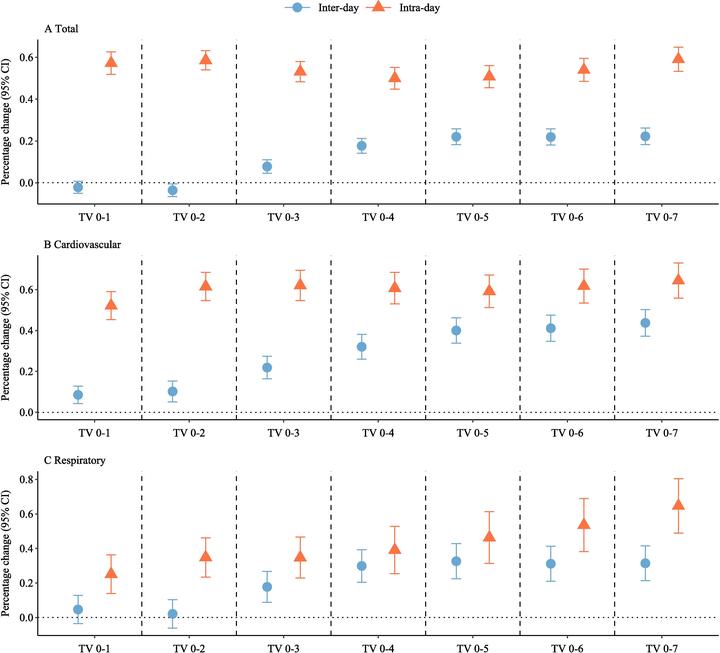Comparison for the effects of different components of temperature variability on mortality: A multi-country time-series study

Abstract
Background. Temperature variability (TV) is associated with increased mortality risk. However, it is still unknown whether intra-day or inter-day TV has different effects. Objectives. We aimed to assess the association of intra-day TV and inter-day TV with all-cause, cardiovascular, and respiratory mortality. Methods. We collected data on total, cardiovascular, and respiratory mortality and meteorology from 758 locations in 47 countries or regions from 1972 to 2020. We defined inter-day TV as the standard deviation (SD) of daily mean temperatures across the lag interval, and intra-day TV as the average SD of minimum and maximum temperatures on each day. In the first stage, inter-day and intra-day TVs were modelled simultaneously in the quasi-Poisson time-series model for each location. In the second stage, a multi-level analysis was used to pool the location-specific estimates. Results. Overall, the mortality risk due to each interquartile range [IQR] increase was higher for intra-day TV than for inter-day TV. The risk increased by 0.59% (95% confidence interval [CI]: 0.53, 0.65) for all-cause mortality, 0.64% (95% CI: 0.56, 0.73) for cardiovascular mortality, and 0.65% (95% CI: 0.49, 0.80) for respiratory mortality per IQR increase in intra-day TV0–7 (0.9 °C). An IQR increase in inter-day TV0–7 (1.6 °C) was associated with 0.22% (95% CI: 0.18, 0.26) increase in all-cause mortality, 0.44% (95% CI: 0.37, 0.50) increase in cardiovascular mortality, and 0.31% (95% CI: 0.21, 0.41) increase in respiratory mortality. The proportion of all-cause deaths attributable to intra-day TV0–7 and inter-day TV0–7 was 1.45% and 0.35%, respectively. The mortality risks varied by lag interval, climate area, season, and climate type. Conclusions. Our results indicated that intra-day TV may explain the main part of the mortality risk related to TV and suggested that comprehensive evaluations should be proposed in more countries to help protect human health.